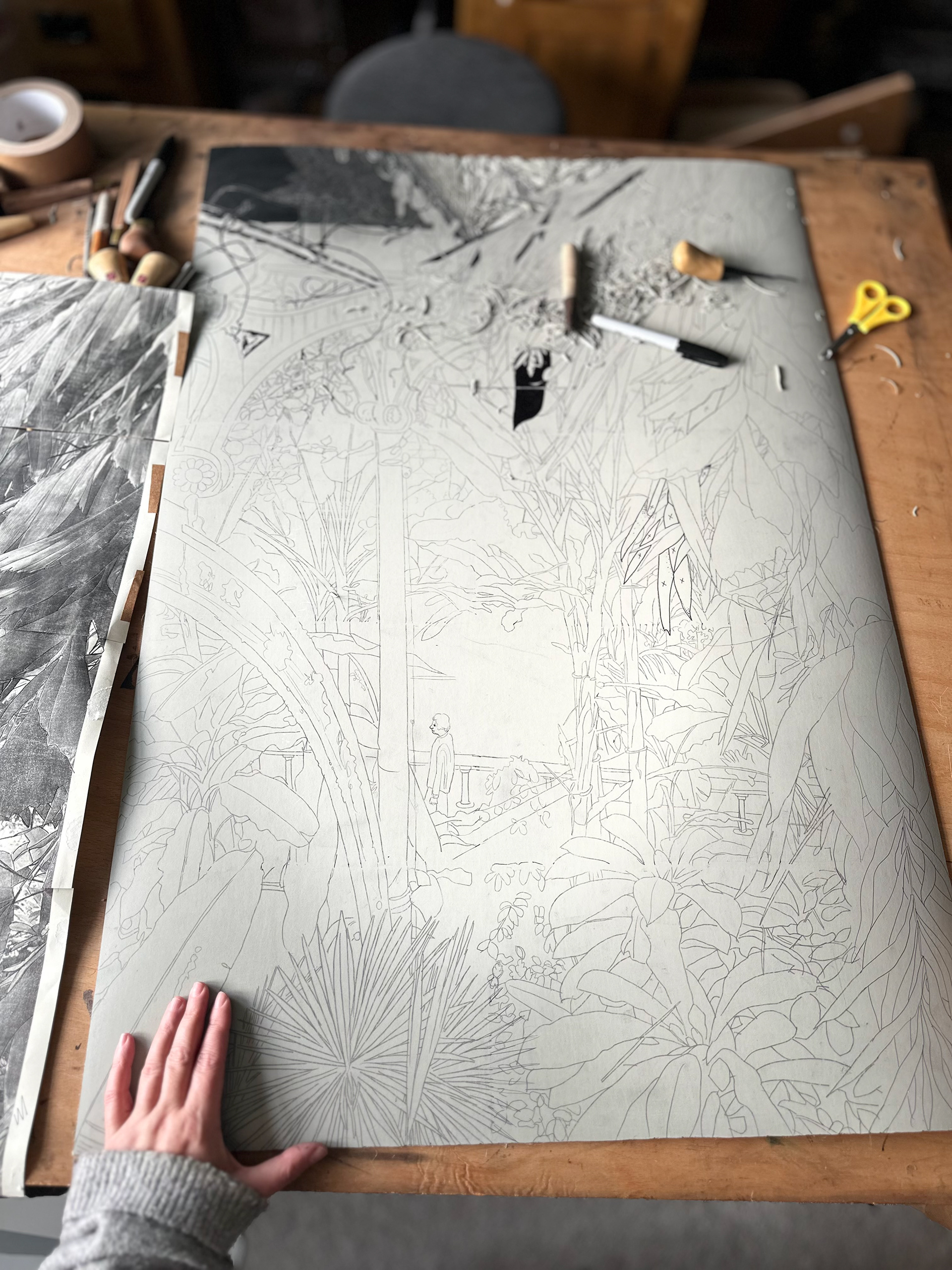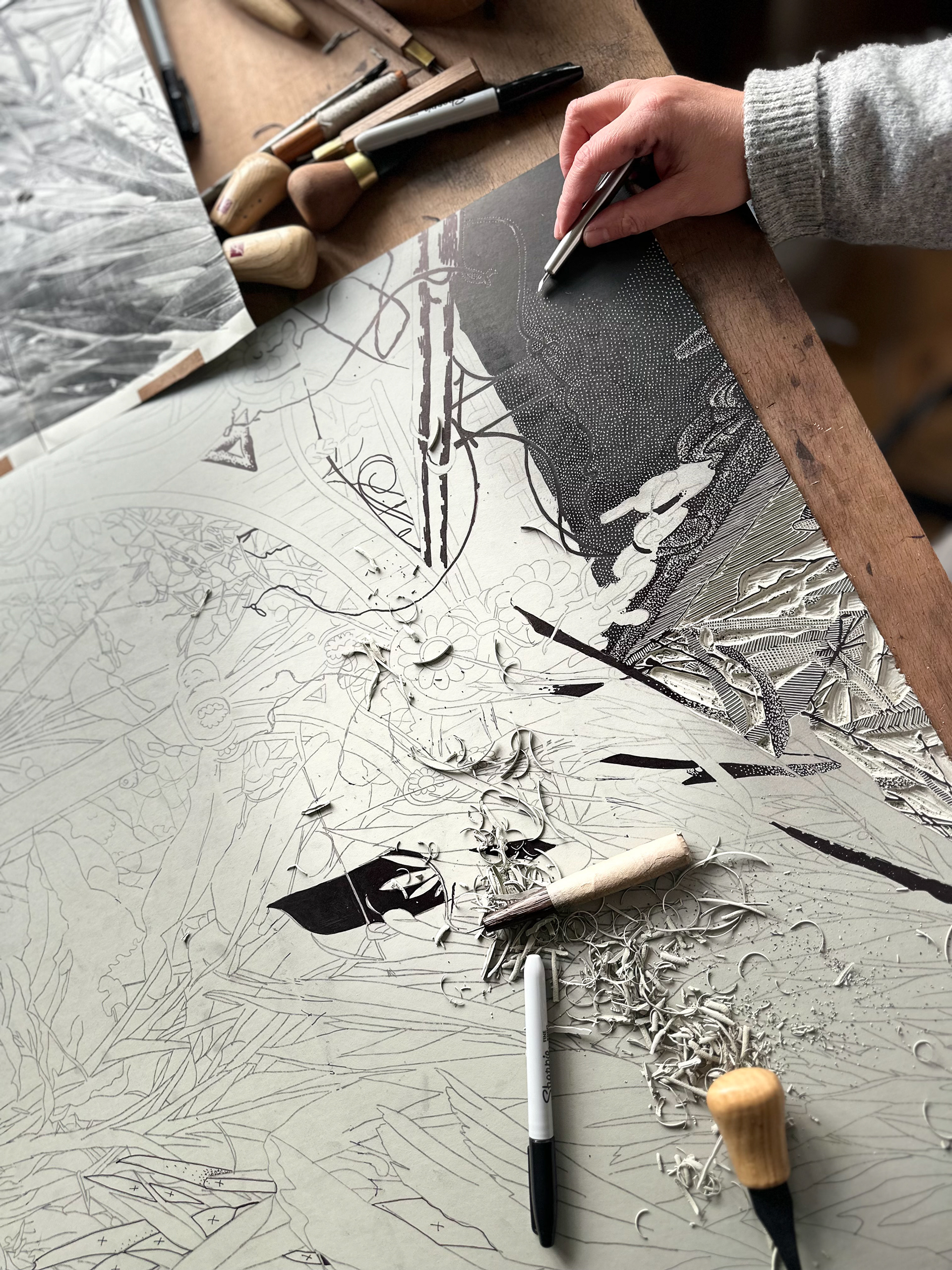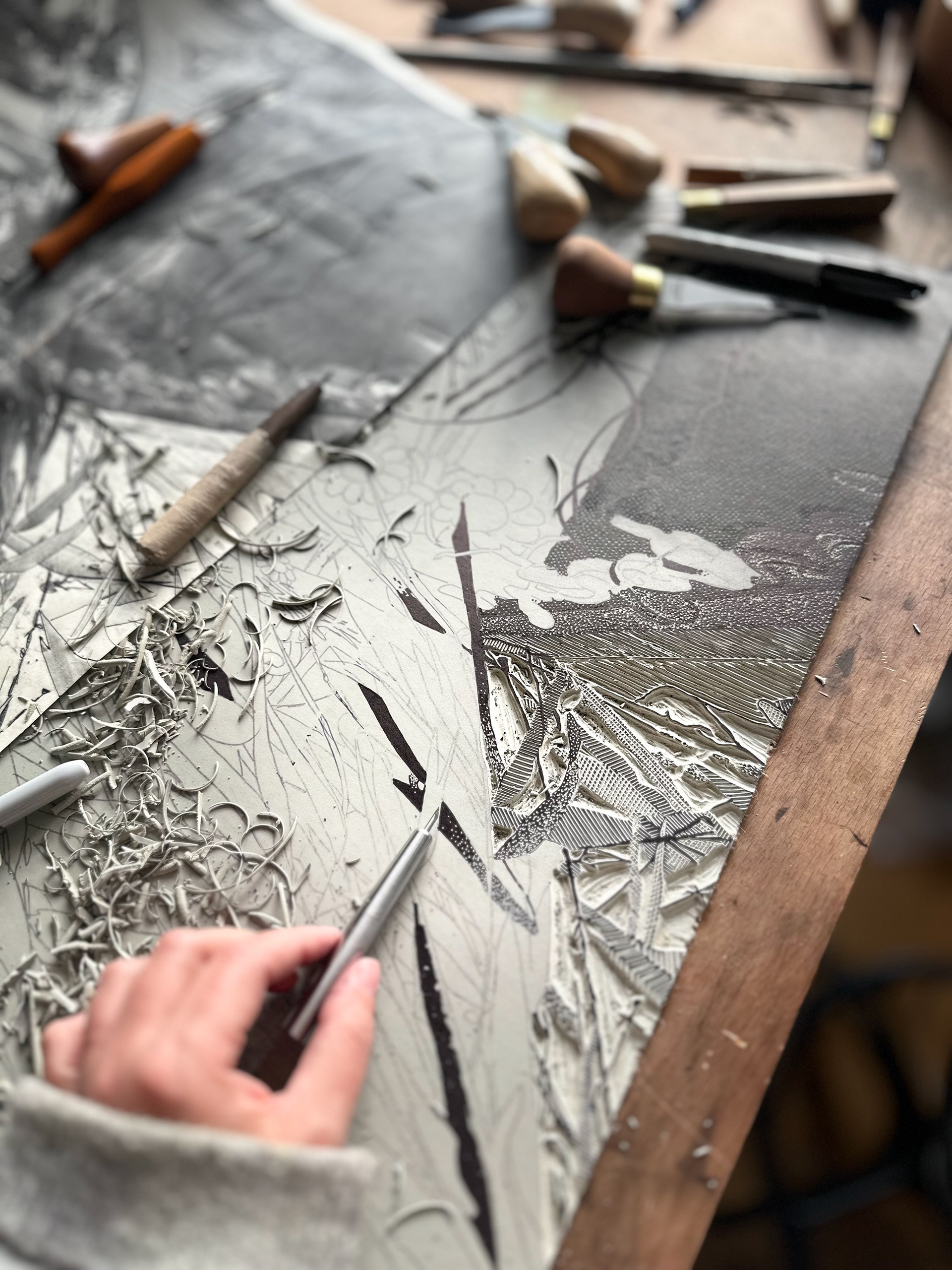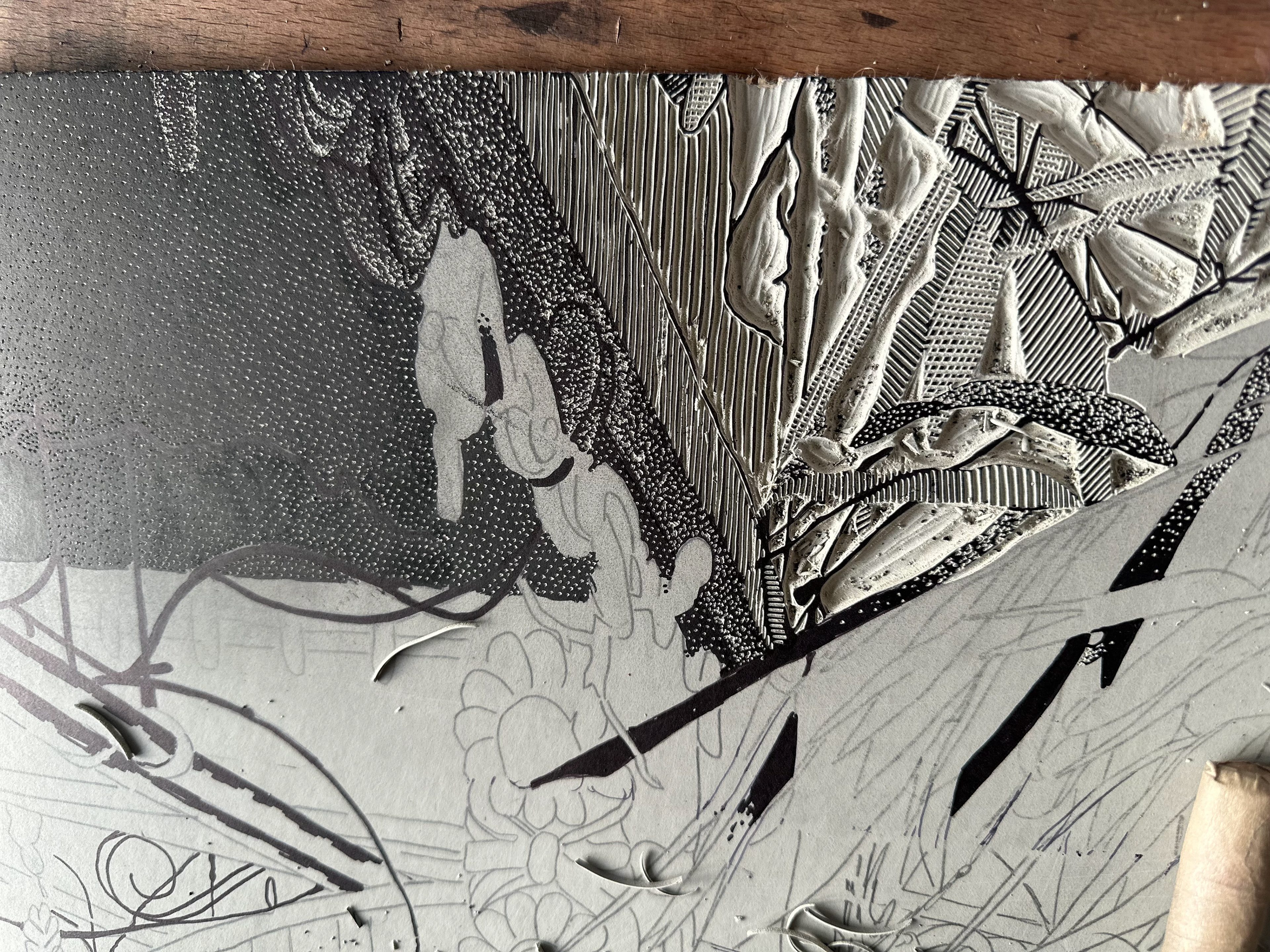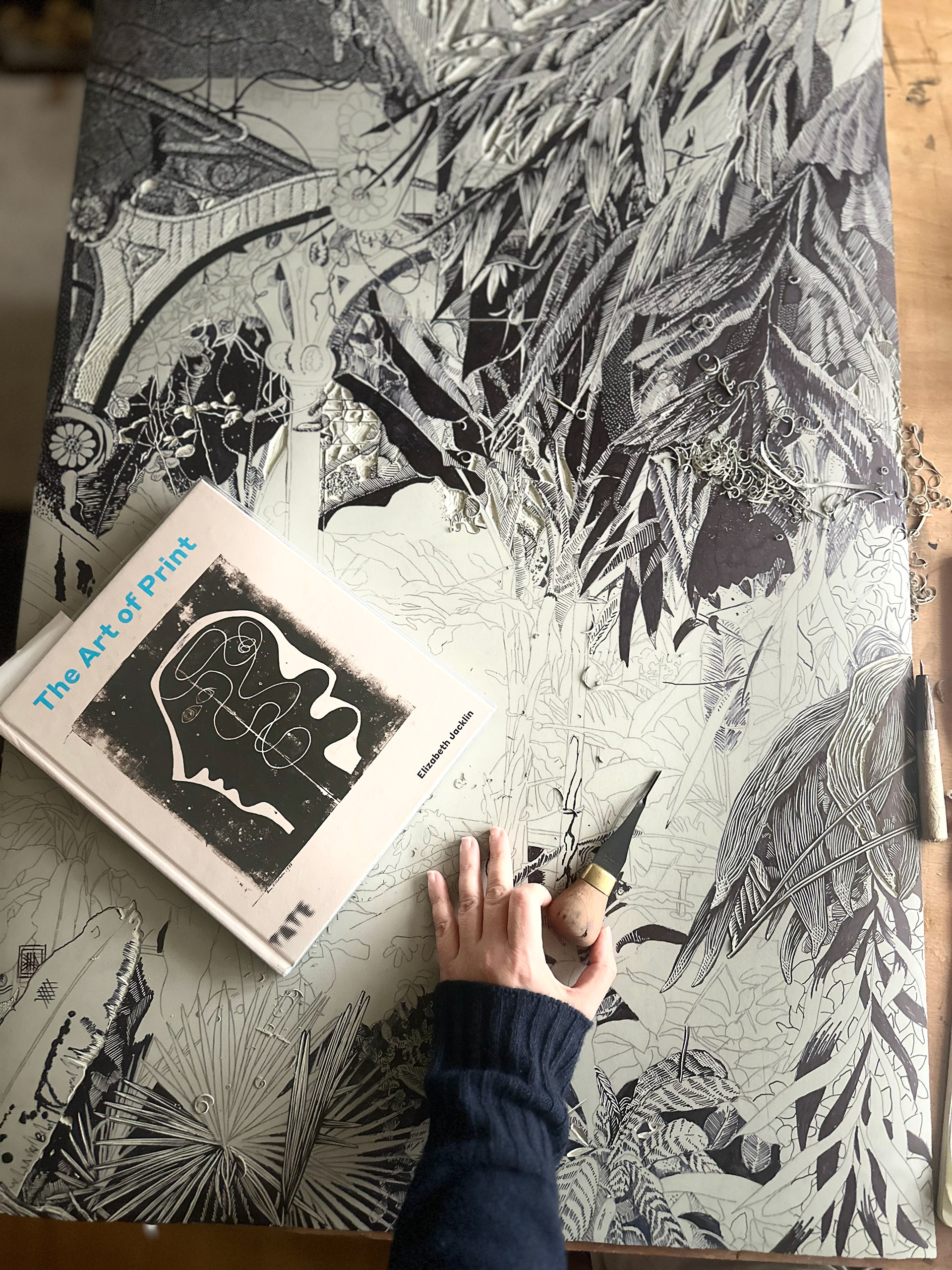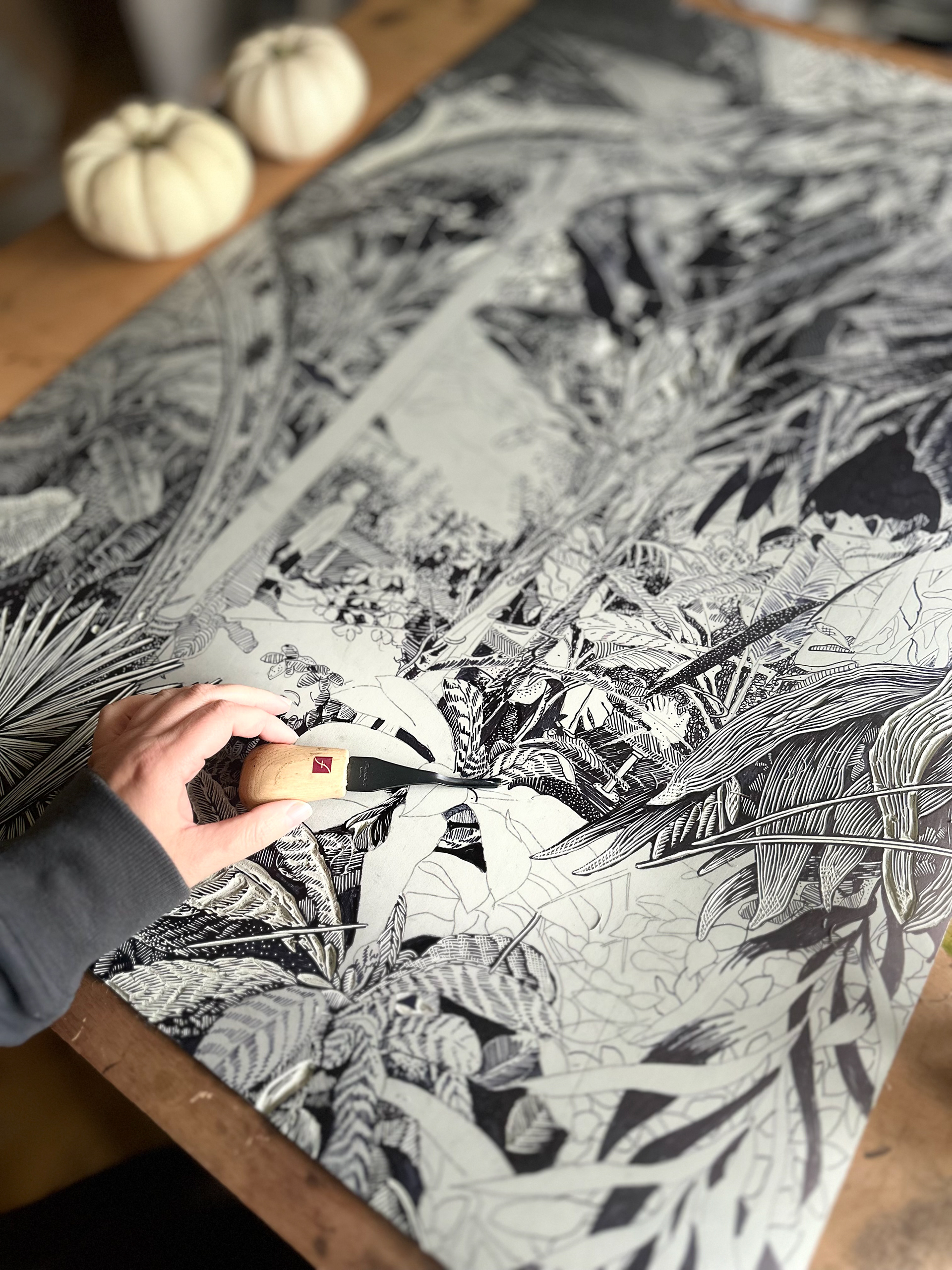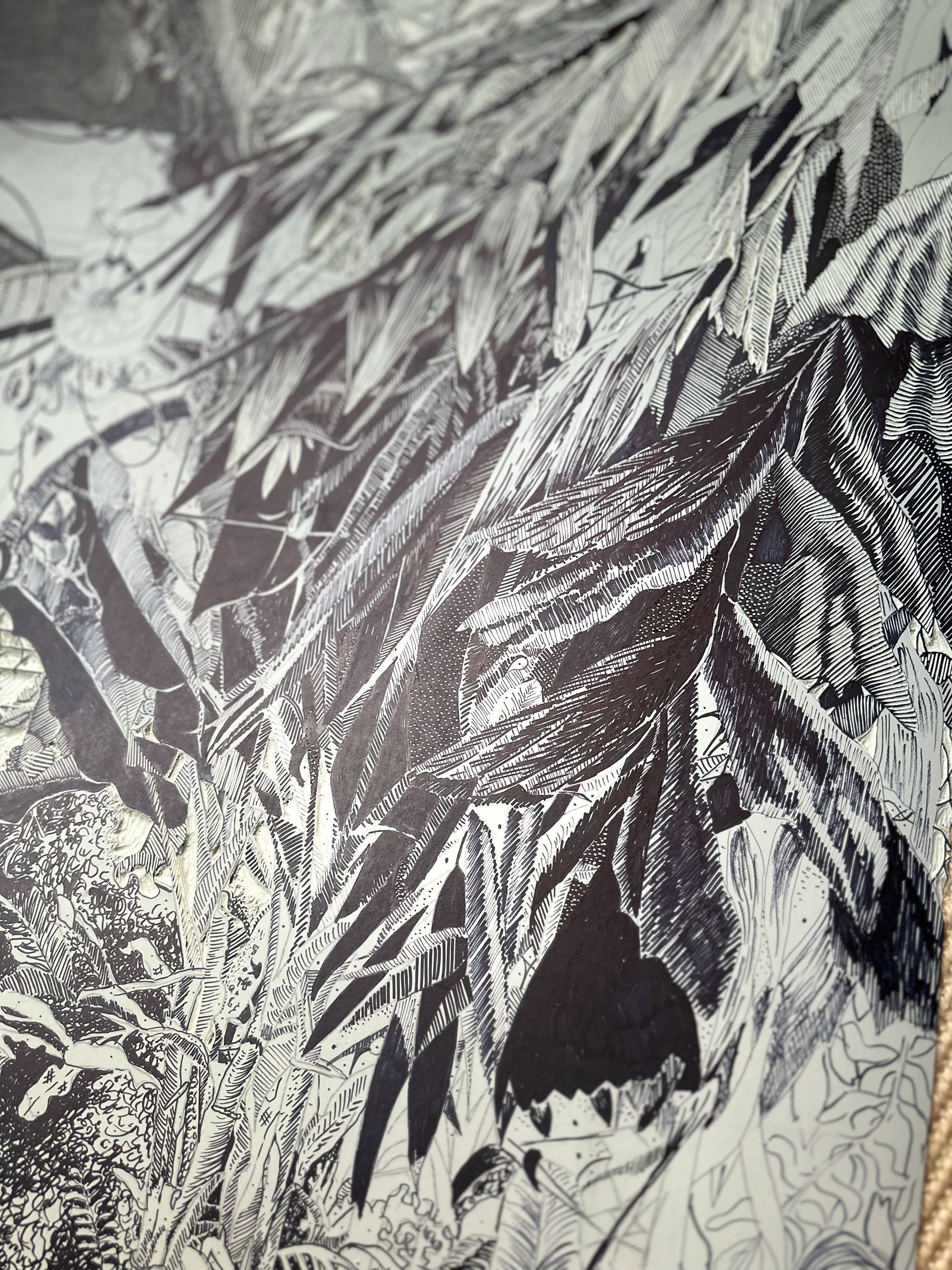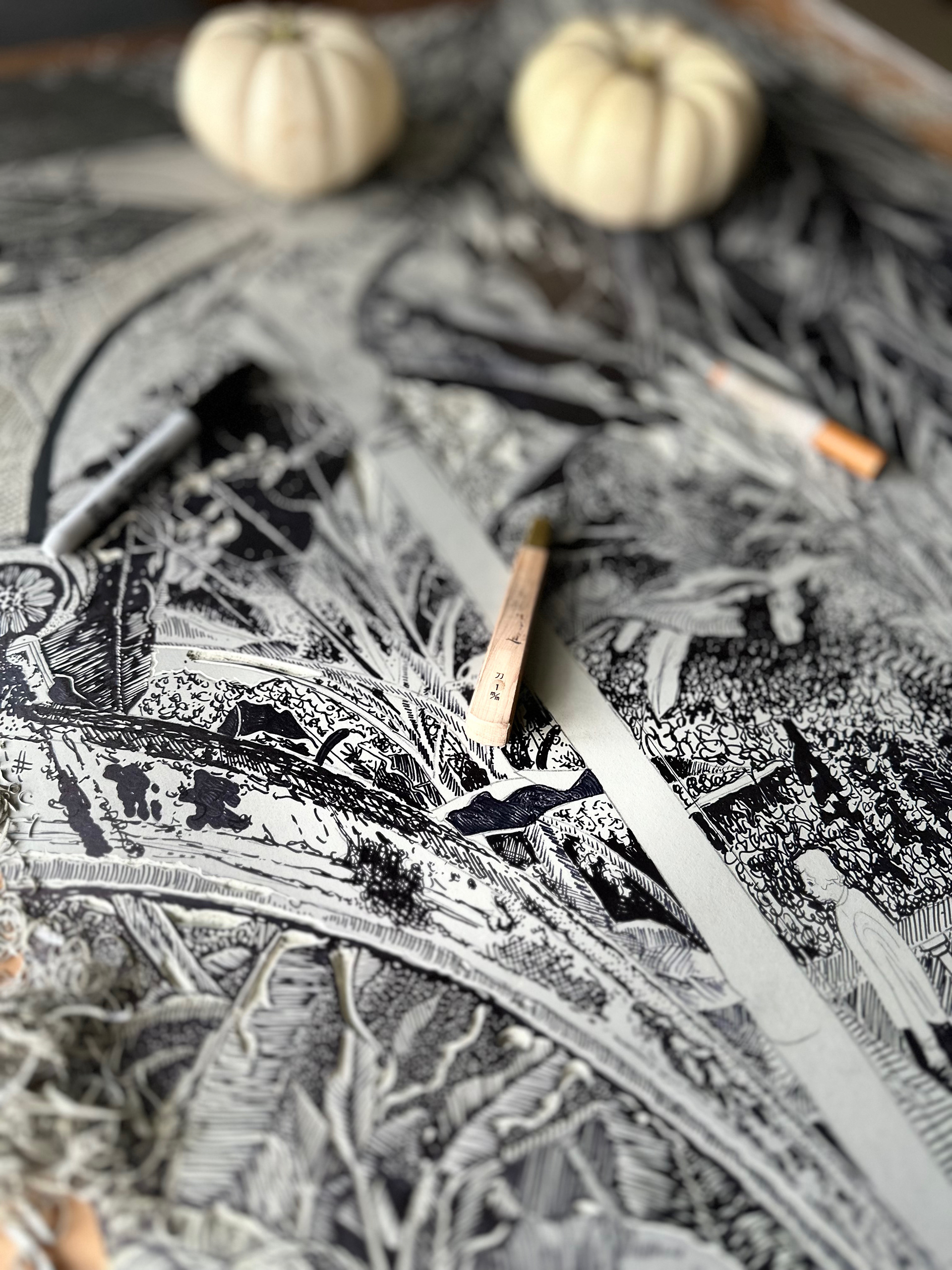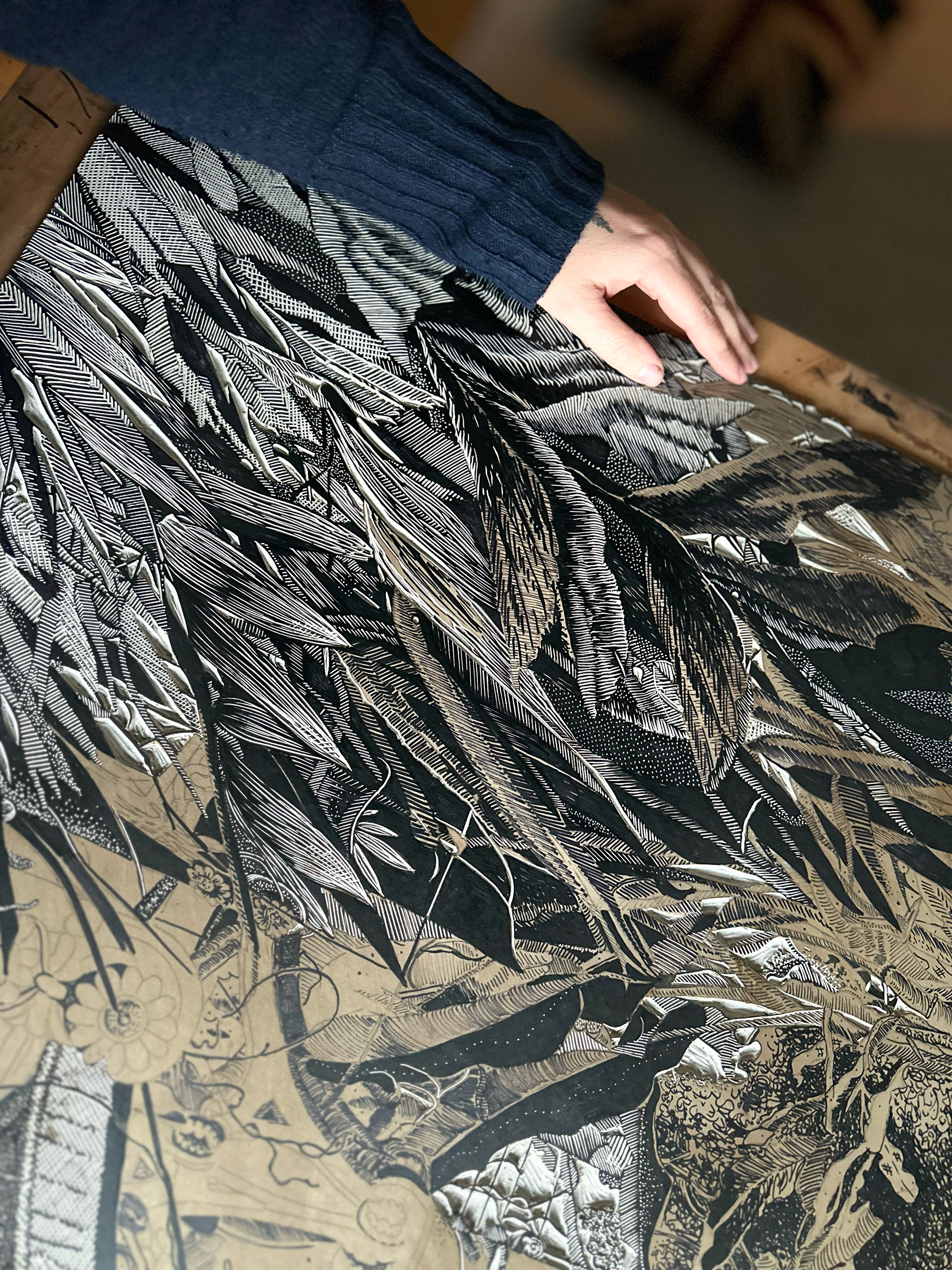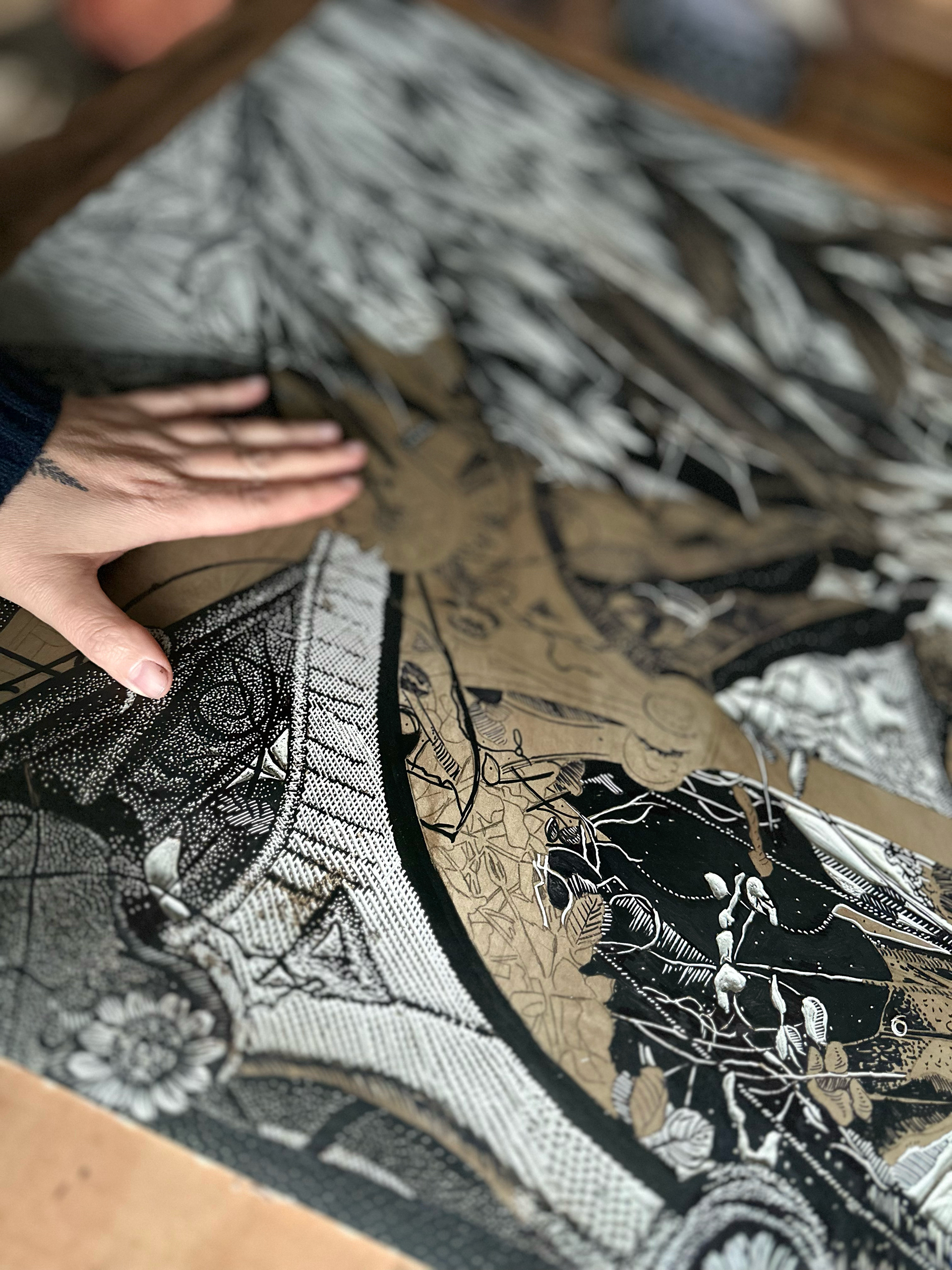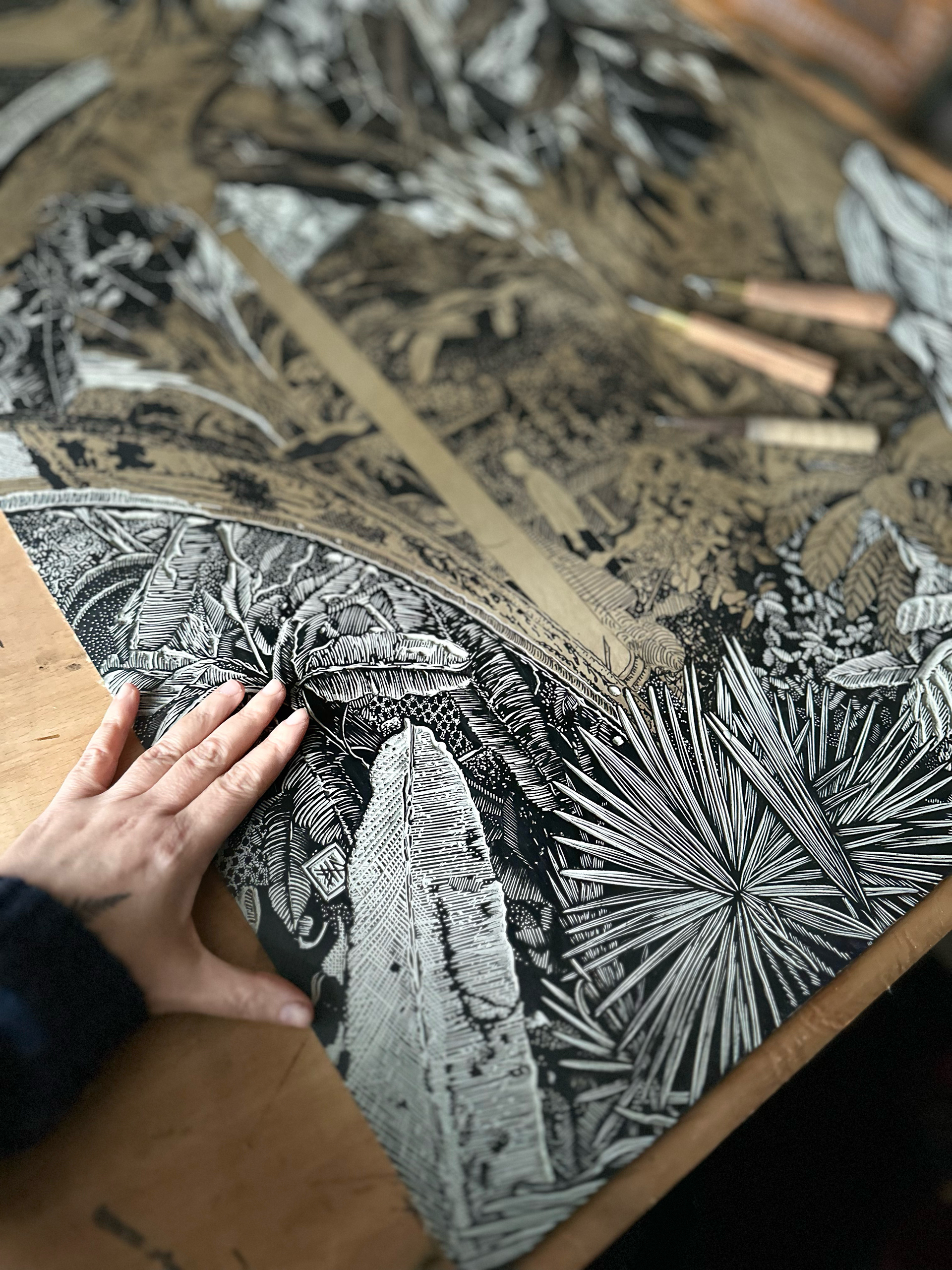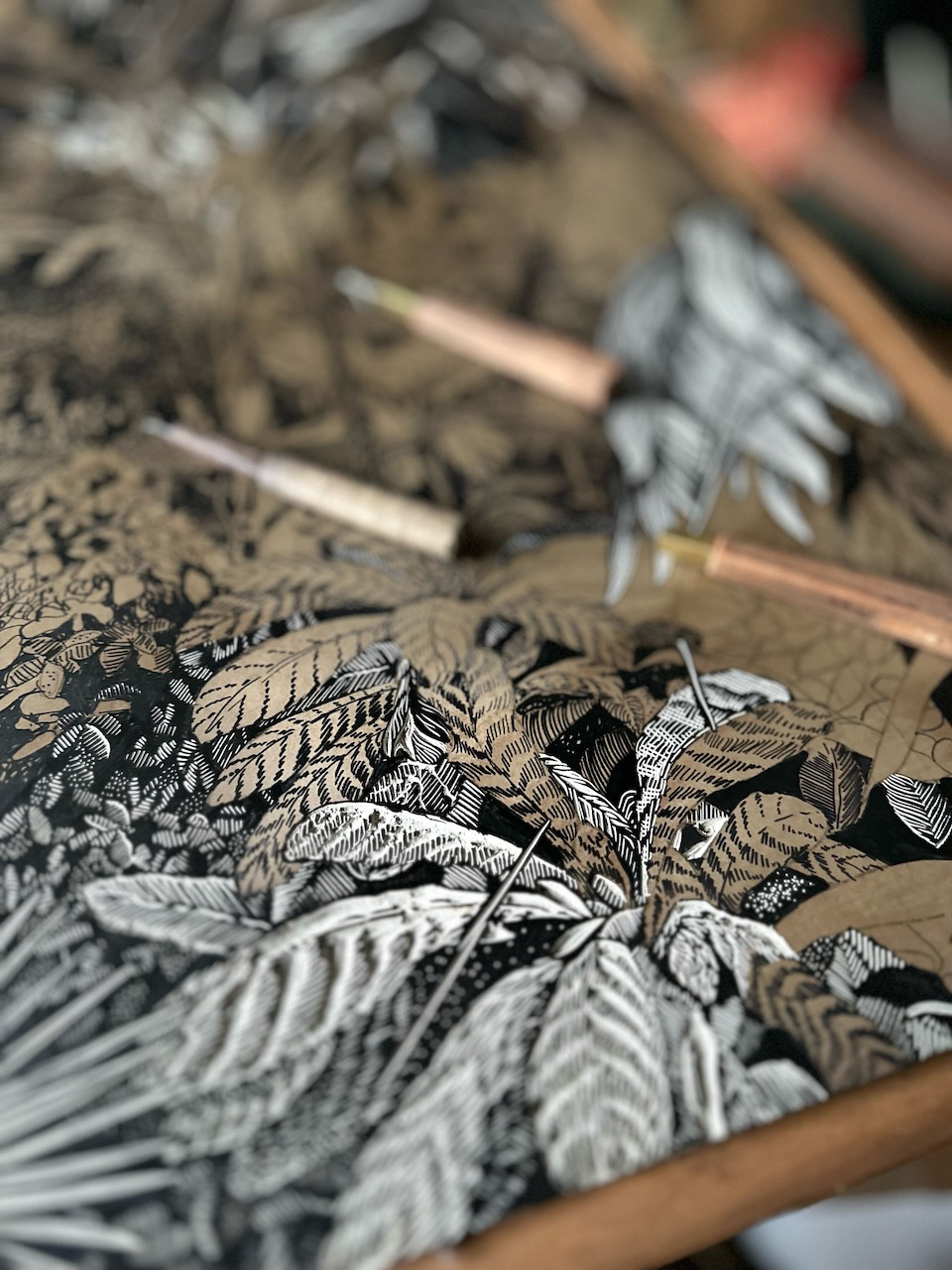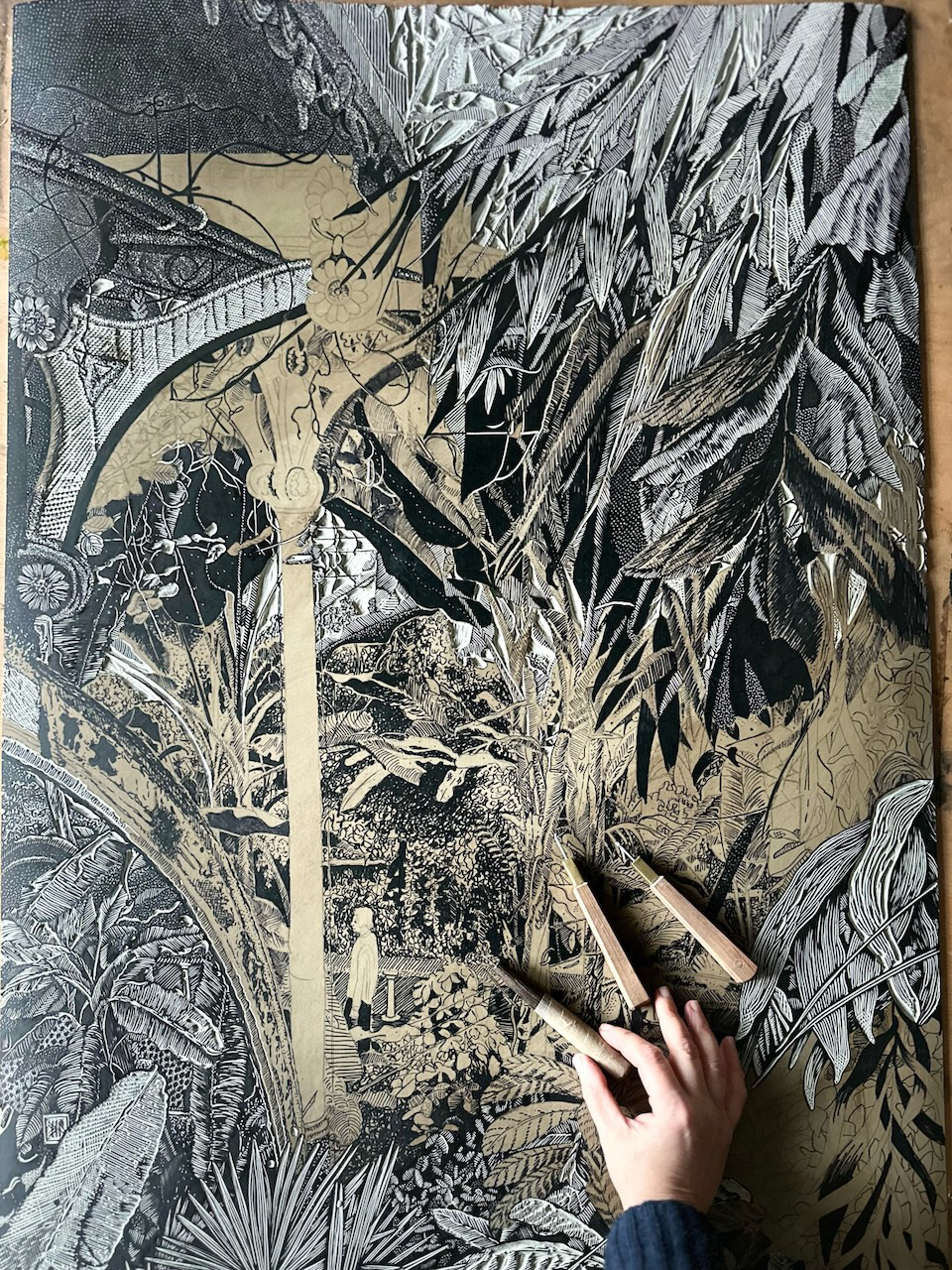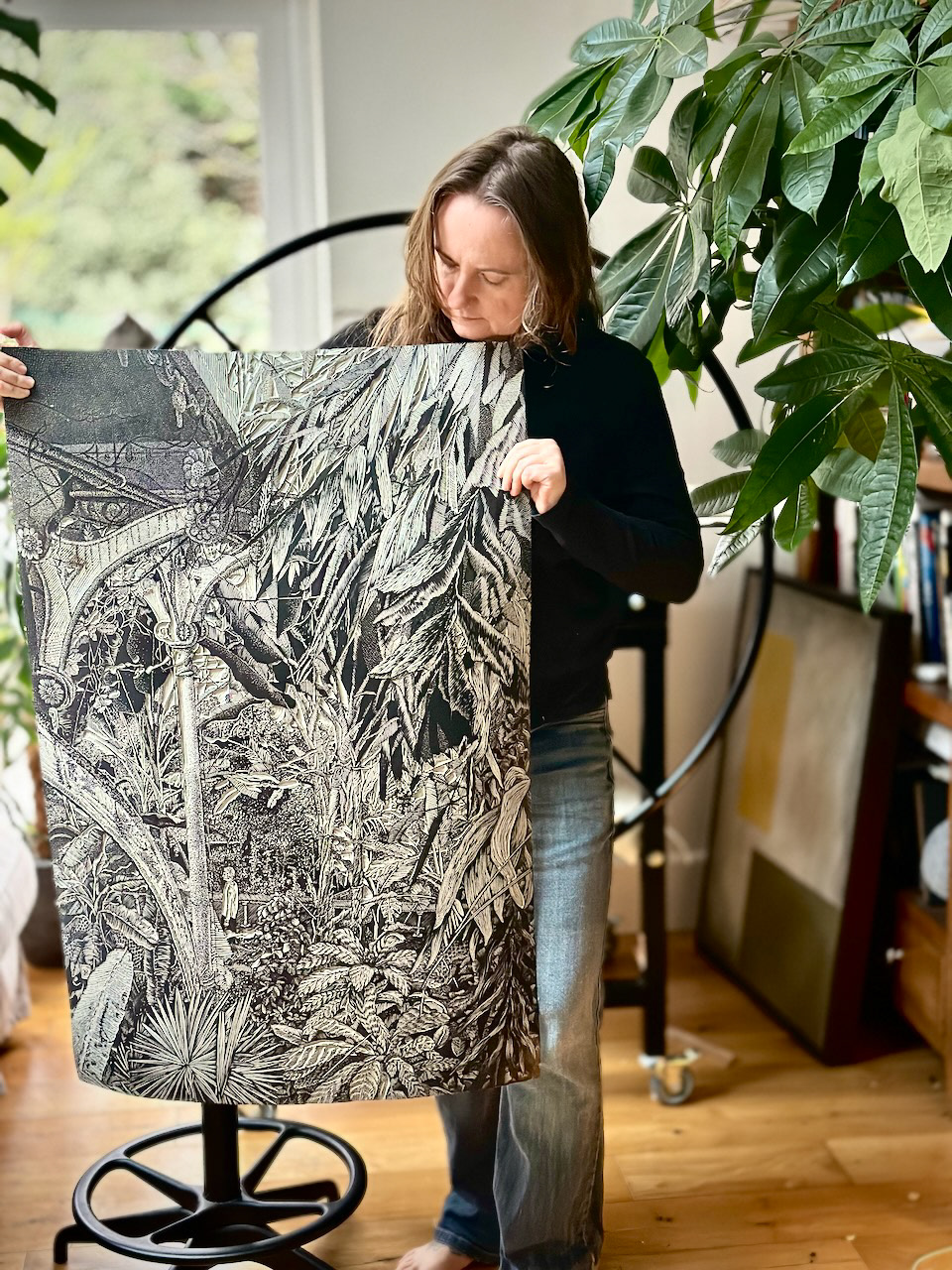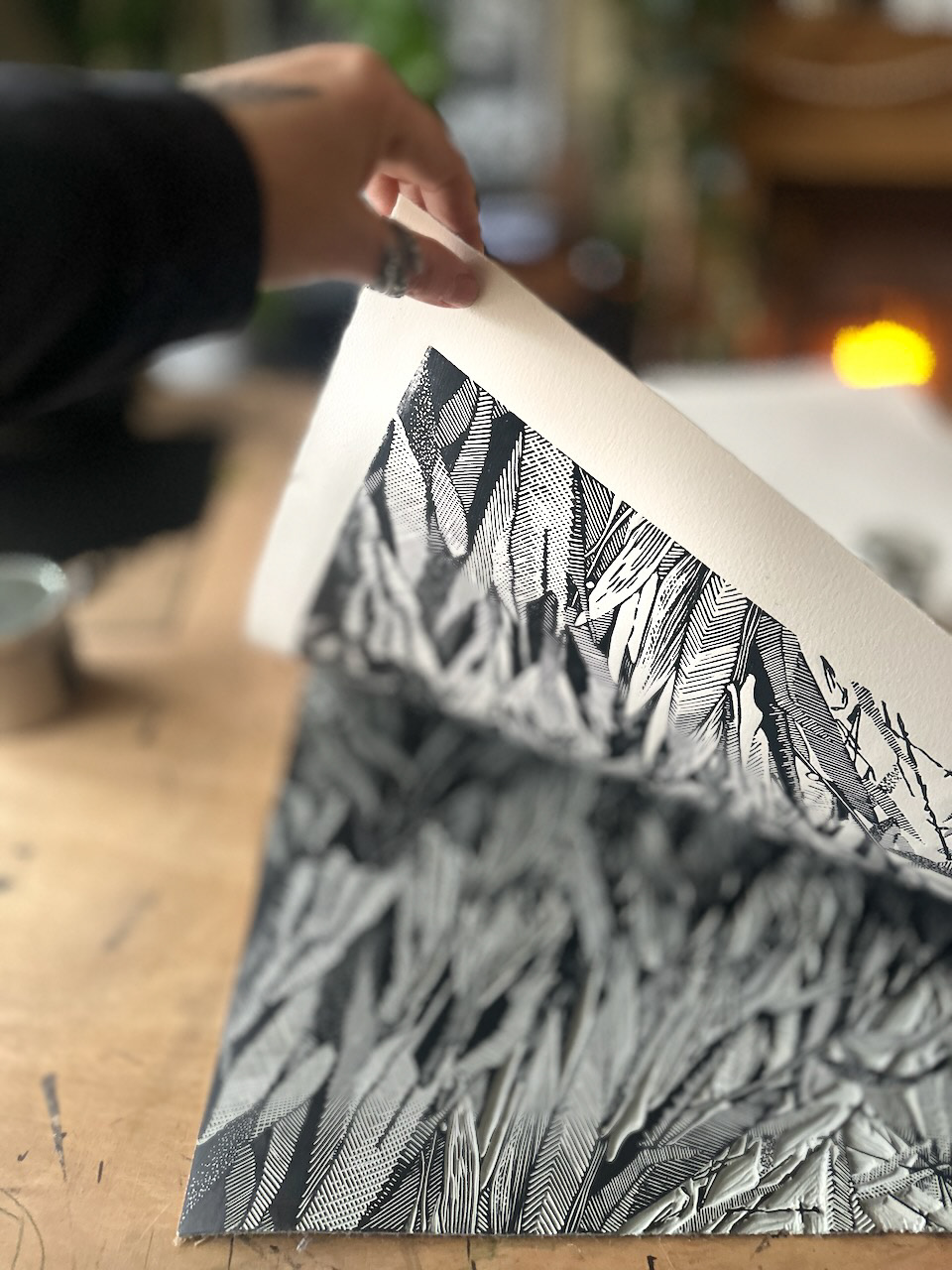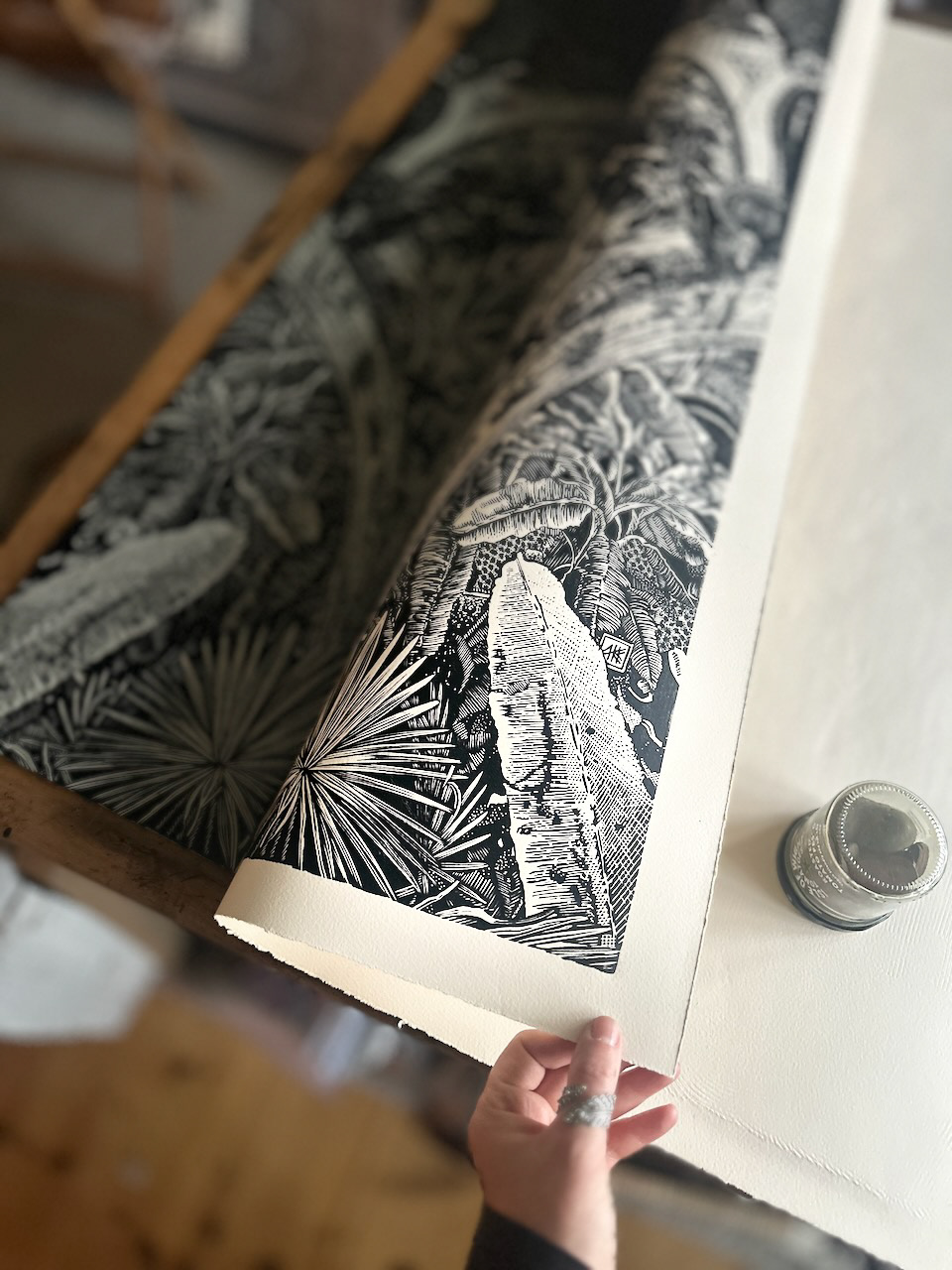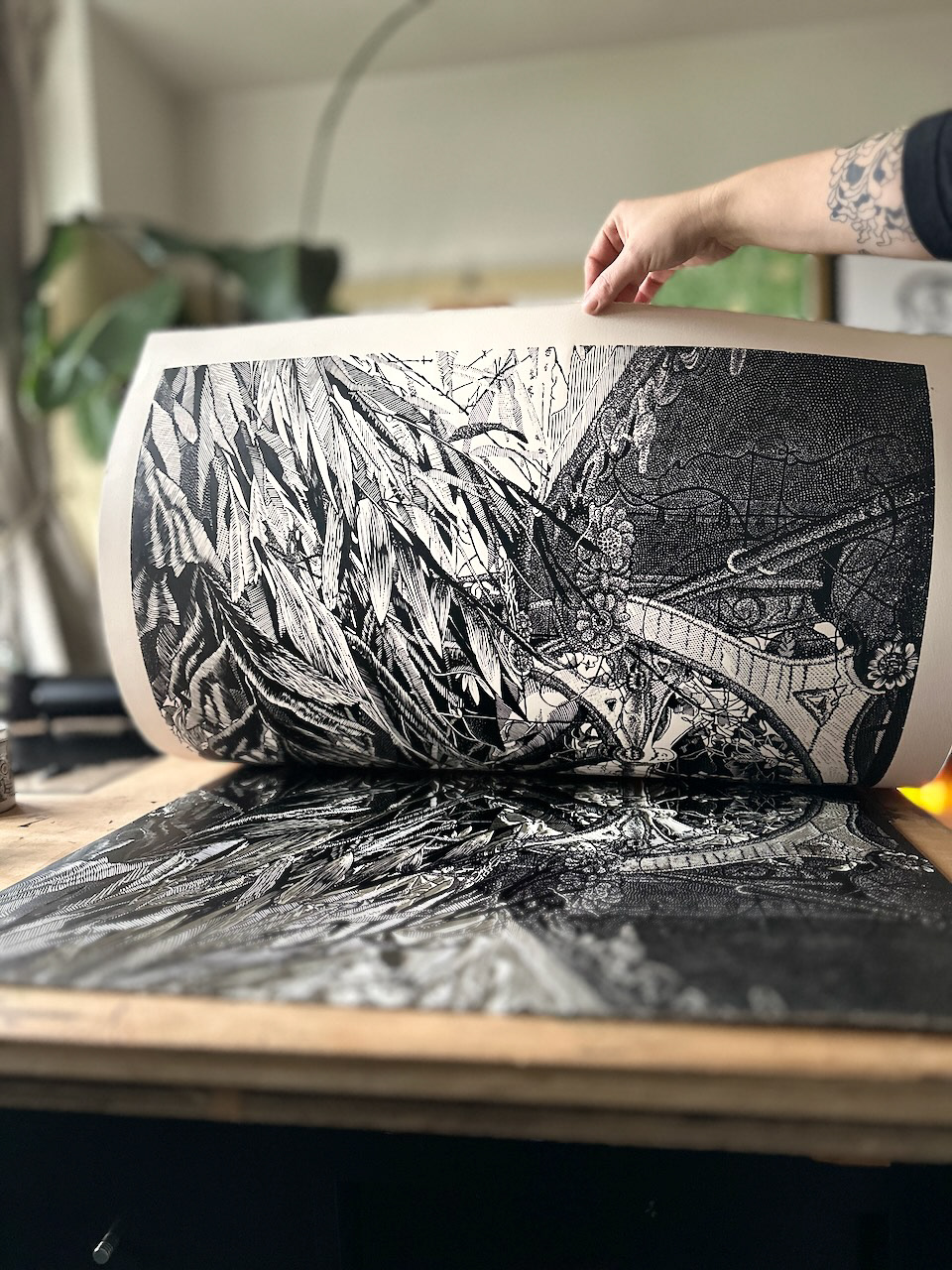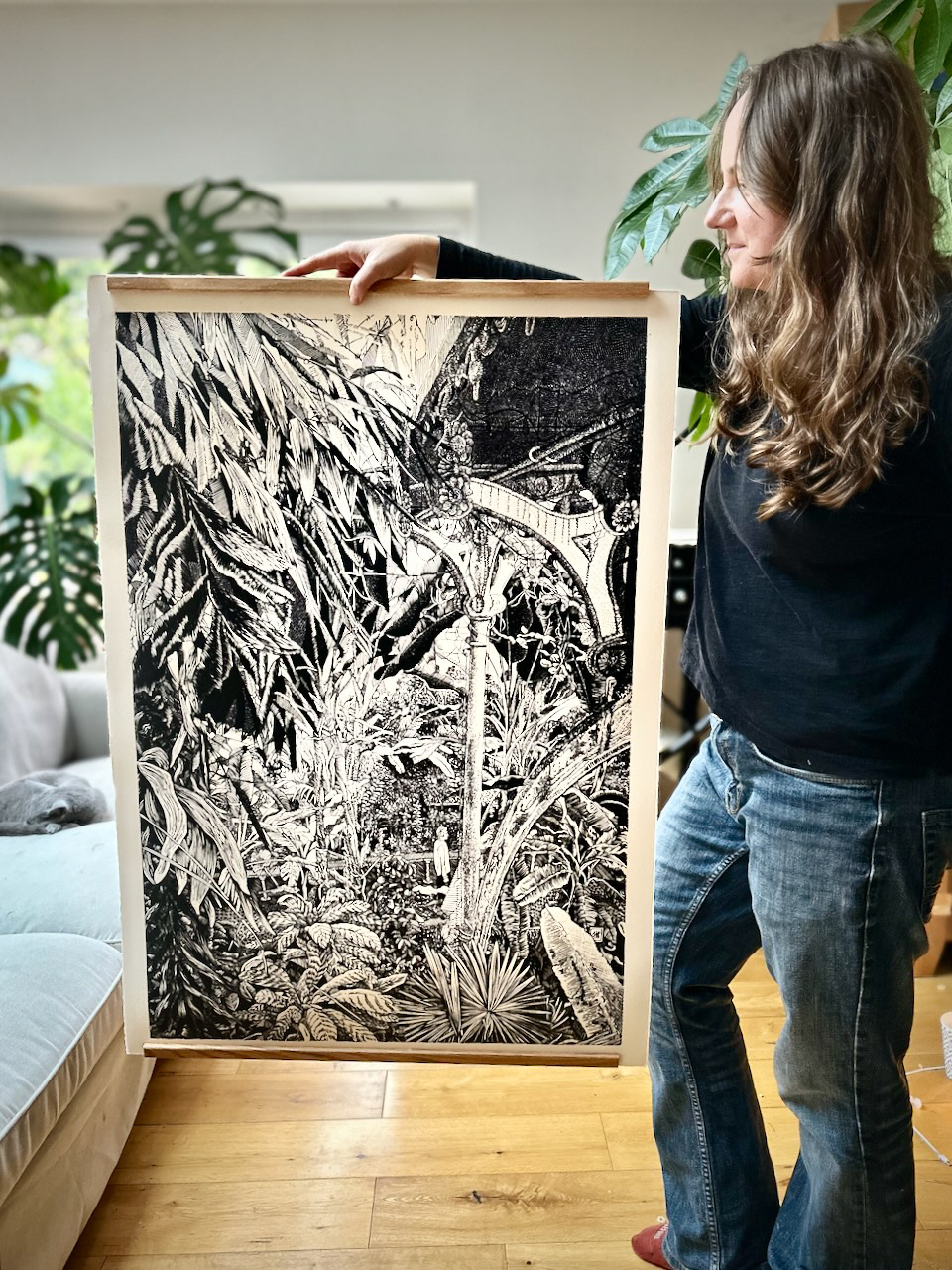‘Sanctuary’ / LINOCUT PRINT / AGA KUBISH
‘Sanctuary’ is a large linocut exploring calm, enclosed spaces and slow airflow between lines and forms. Hand-printed on Somerset paper, 100 × 70 cm, limited edition of 50, signed and numbered. Cut and printed in my Somerset studio.
Linocut Print, 100 × 70 cm
In this project, I decided to focus even more on textures and patterns, which make the sense of shading so difficult to achieve in lino printing.
The idea of showing the Sanctuary in a more chaotic, organic way connects with the thought of leaving the contour line and letting the textures touch each other. Through that choice, I could get closer to myself in some sense. Dropping the boundaries represented by strong outlines gave me more freedom in creation, but also opened new challenges. There was a risk of losing the contrast between lights, mid-tones, and dark areas.
The organic, massive part of the plant in the front-right corner — a bit chaotic and theatrical — stands in contrast to the architectural elements, which are smooth, high, and predictable in their clear lines.
By avoiding hard contours, I achieved a symbiotic feel to the whole scene. There are no limits between plants and architecture; it’s not about rivalisation anymore, but coordination. This time I see this garden house as a sanctuary, not a prison for plants.
The central element of the scene is a single person walking gently — in peace and calm — through the chaos of leaves. And although surrounded by the wildness of plants, we get a feeling of harmony, like walking inside a sanctuary where nature, architecture, and humans exist in balance, supporting and carrying one another.
Paper: Somerset Satin/Velvet 300 gsm (St Cuthberts Mill)
Paper size: 100 × 70 cm
Edition: 50 (signed & numbered)
Printing: hand-printed without a press (archival inks)
Year: 2025
Edition numbers: 1/50–50/50
Drawn as a quiet counterpart to my busier architectural pieces, ‘Sanctuary’ holds the eye in a slower loop — fewer cuts, more breathing room. I wanted the image to feel like stepping into shade and hearing your own rhythm again. Carved over several sessions, printed by hand with a steady film of ink, it rewards close viewing: small shifts in pressure, tiny burrs, the human tempo of relief printing. Each pull is slightly different — that’s the point.
Artistic Style and Historical Context
This work continues my exploration of the relationship between organic growth and human-made structure. It draws on traditions of botanical illustration and architectural printmaking, yet departs from them by rejecting precision in favour of texture and flow. The absence of contour lines recalls early expressionist woodcuts, where emotional rhythm replaced technical control. The Palm House — a Victorian symbol of order and collection — becomes here an arena of coexistence, echoing broader shifts in art history from domination of nature to collaboration with it.
Interpretation
‘Sanctuary’ can be read as a quiet dialogue between chaos and order. The human figure is almost secondary — a witness rather than a protagonist. The focus lies on the fragile agreement between architecture and vegetation, suggesting that peace may arise not from control, but from trust in organic balance. It’s an image of surrender and belonging, where every element holds space for the other.
もちろん。こちらは同じトーンを保った短い日本語版です:
この作品「Sanctuary(聖域)」は、自然と建築のあいだにある静かな調和を探るリノカットです。
線を捨て、質感とパターンだけで形を描くことで、境界のない世界を表現しています。
人と植物、構造と混沌がひとつに息づく場所 — それがこの「聖域」です。
線を捨て、質感とパターンだけで形を描くことで、境界のない世界を表現しています。
人と植物、構造と混沌がひとつに息づく場所 — それがこの「聖域」です。
Details of 'Sanctuary' Linocut Print
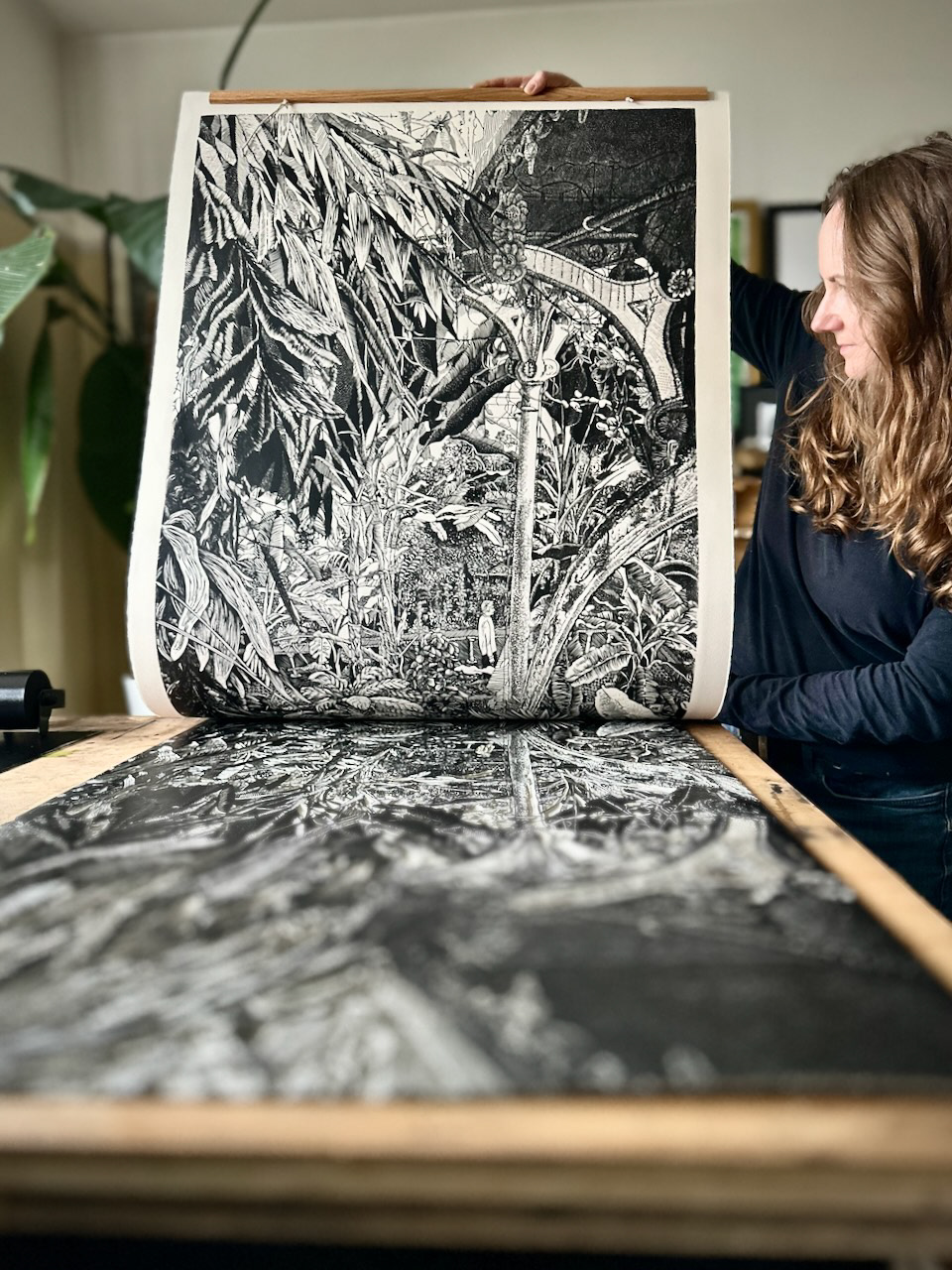
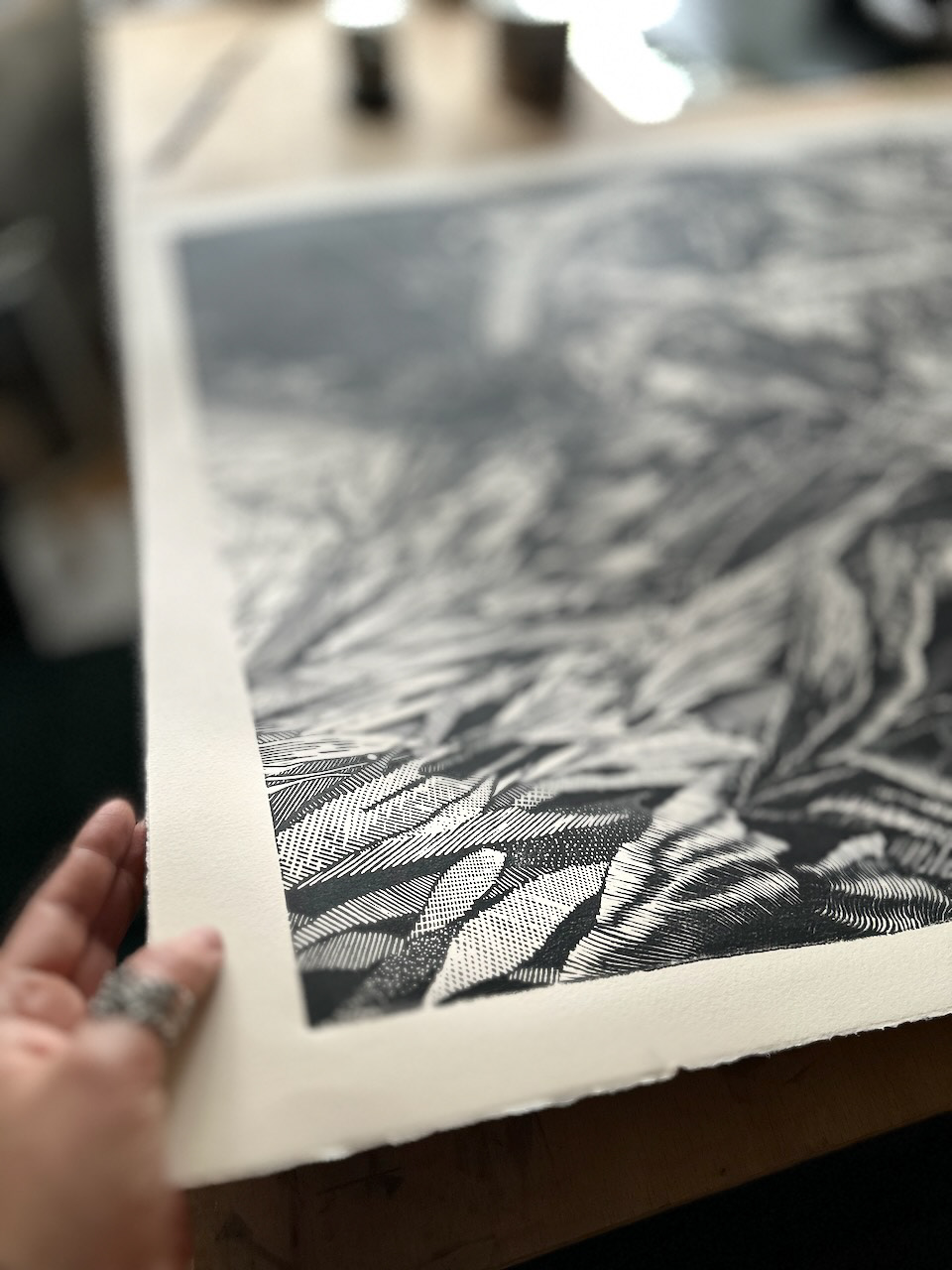
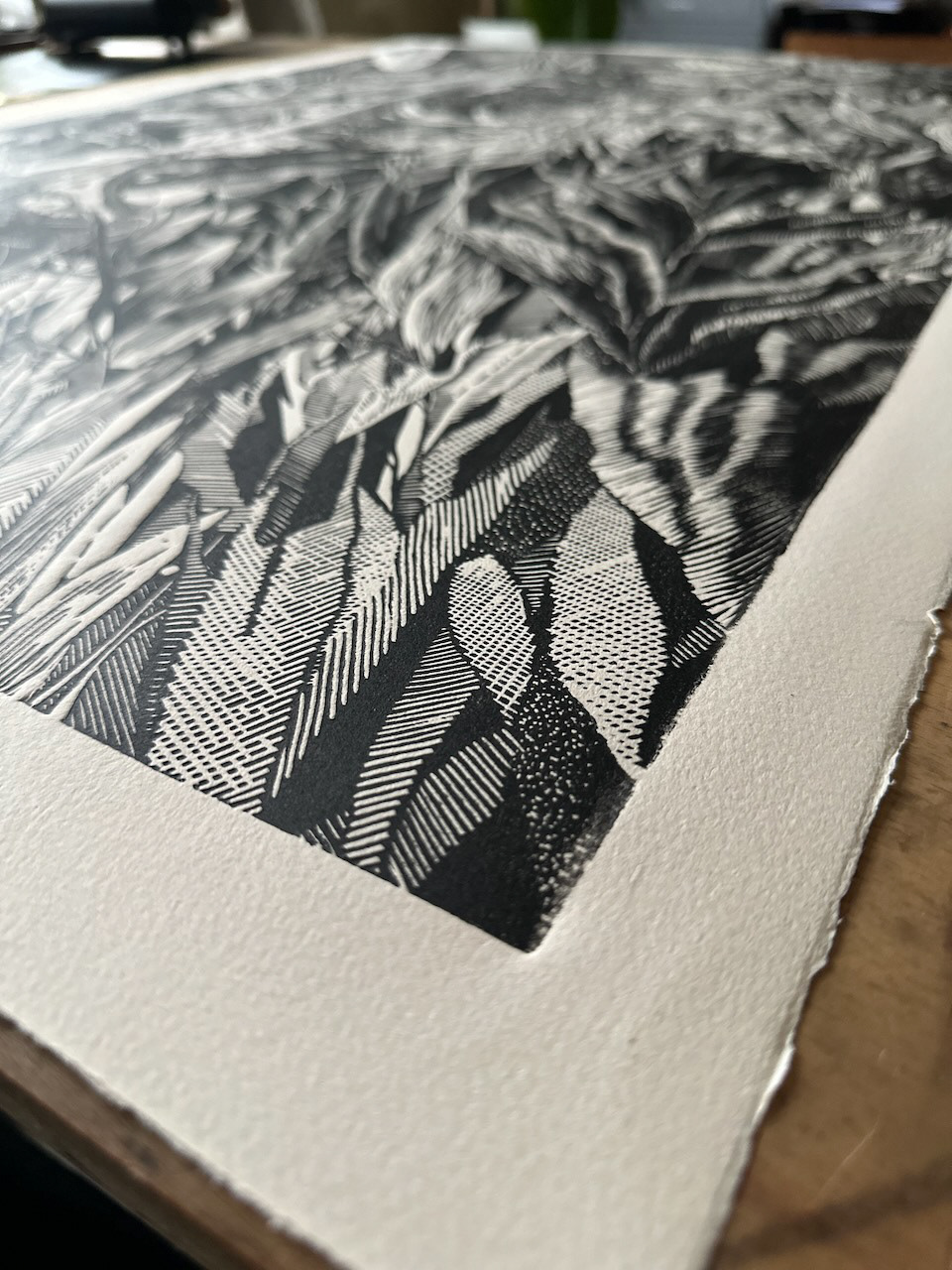
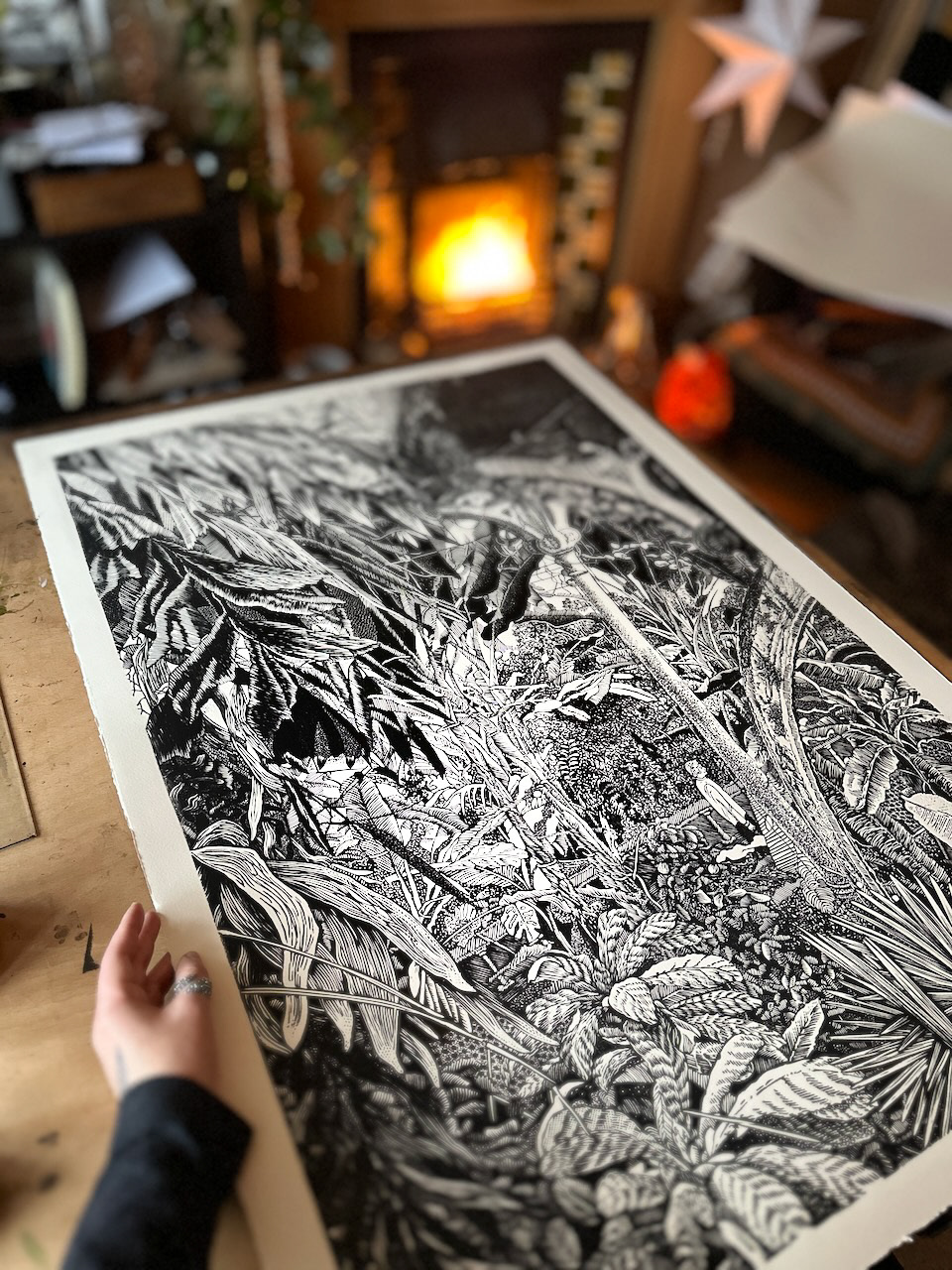
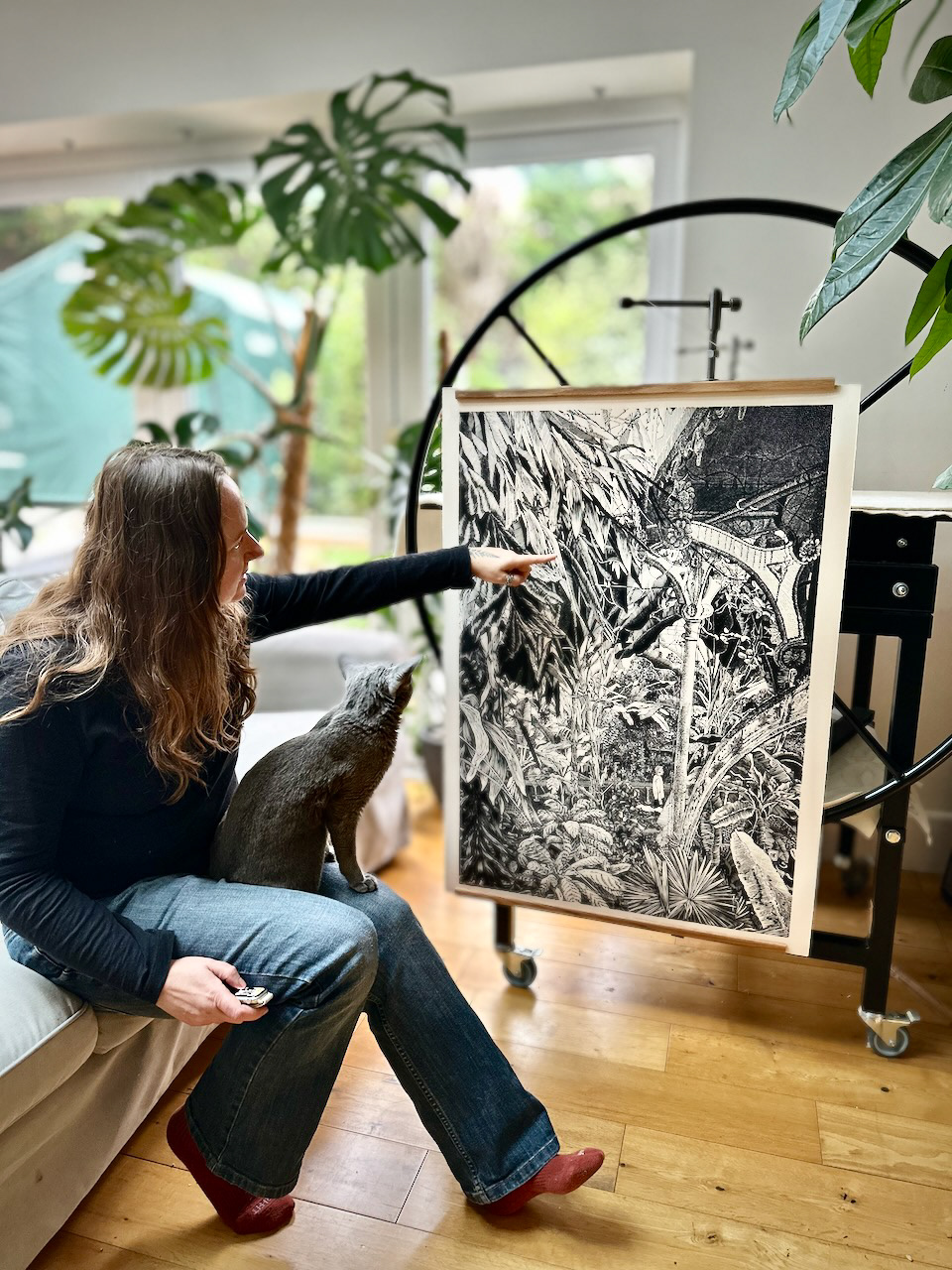
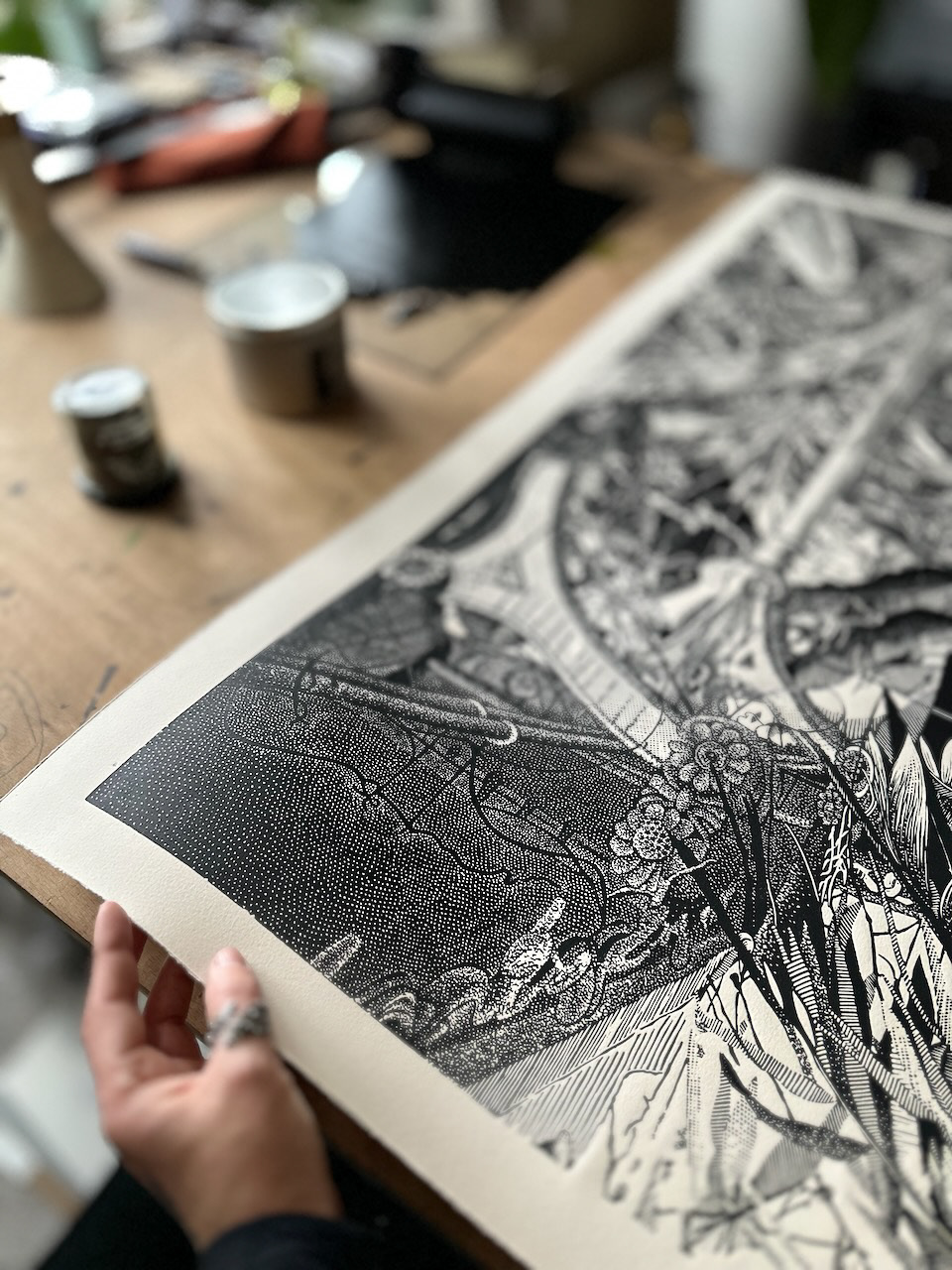
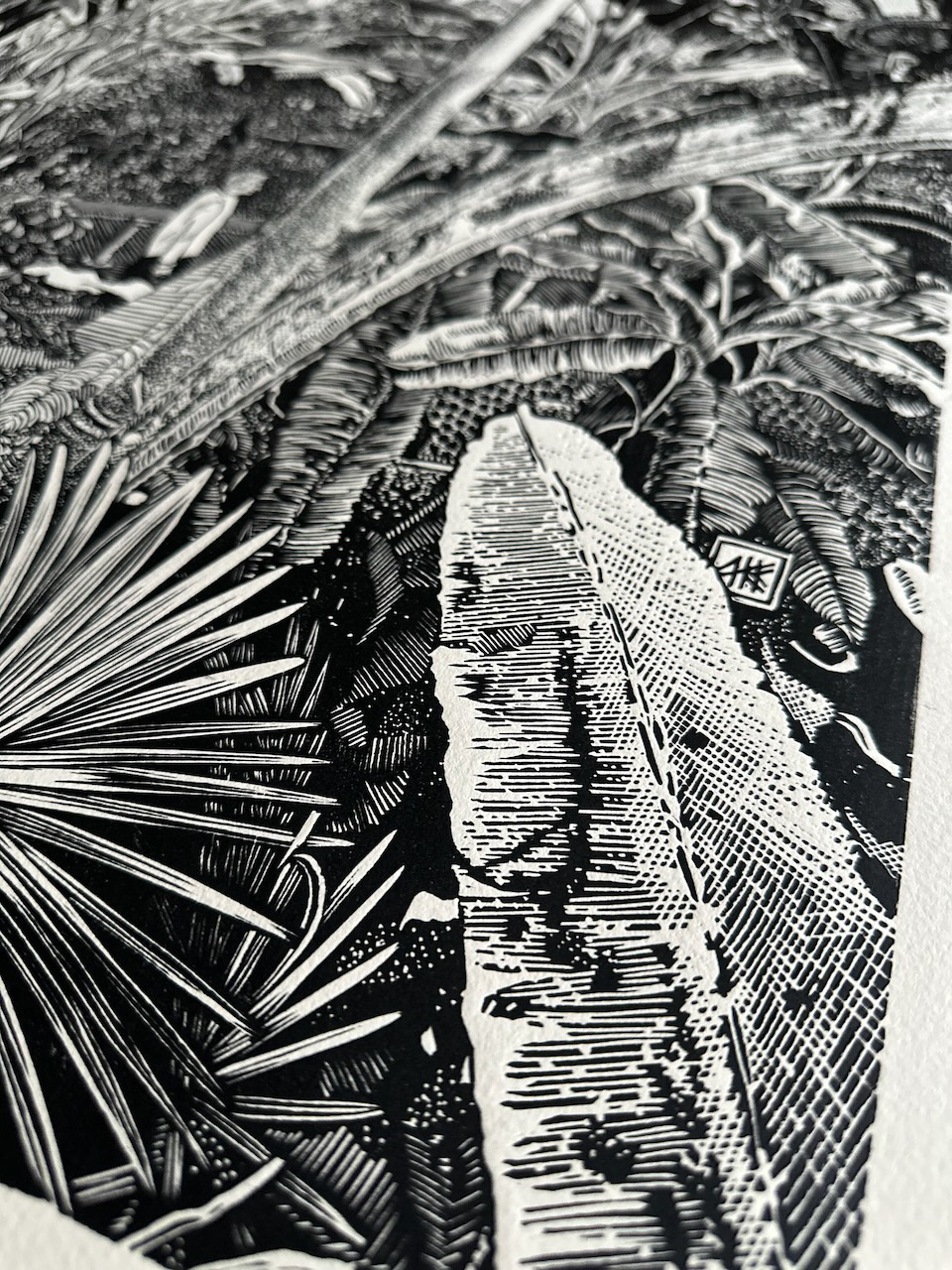
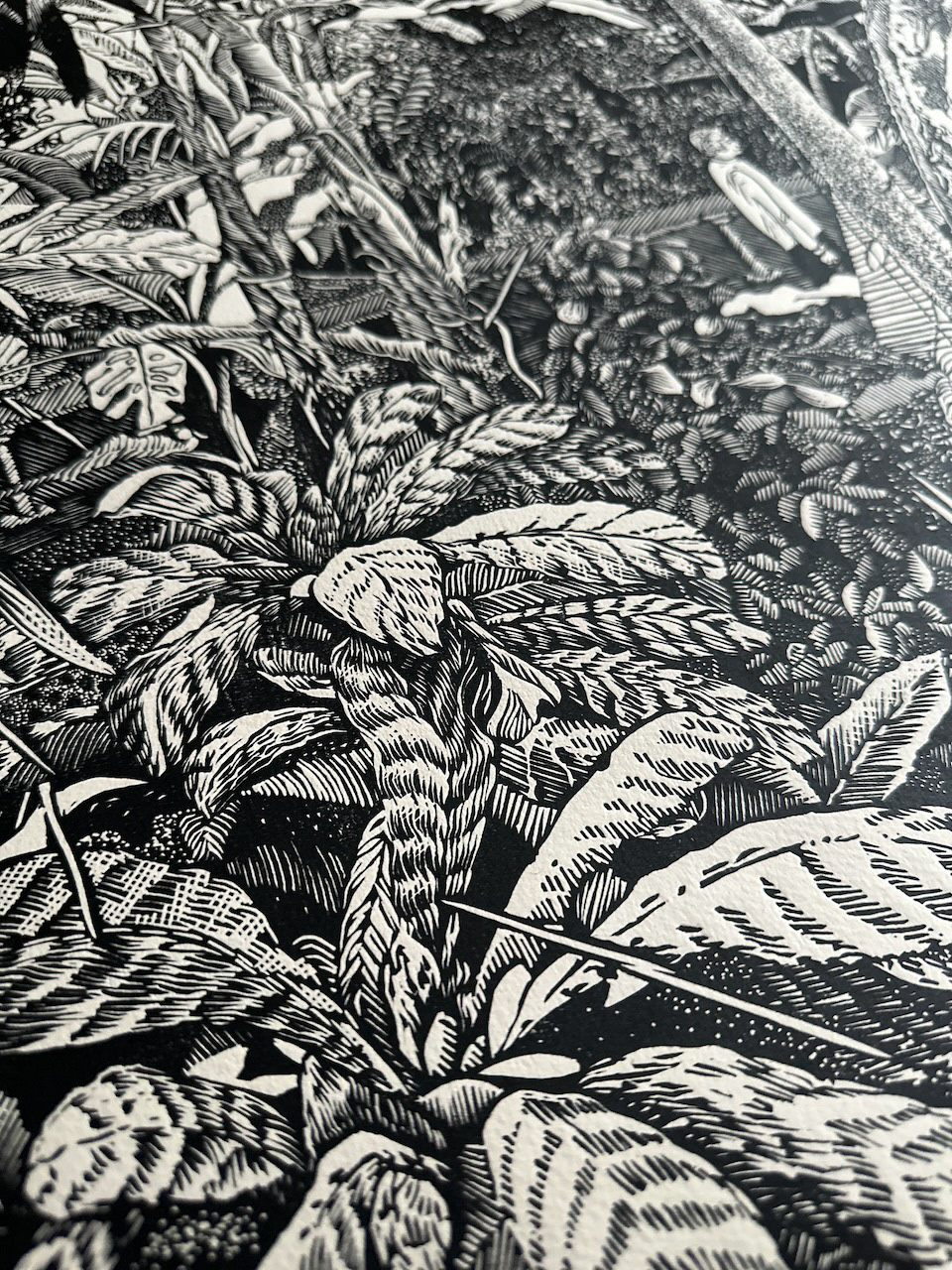
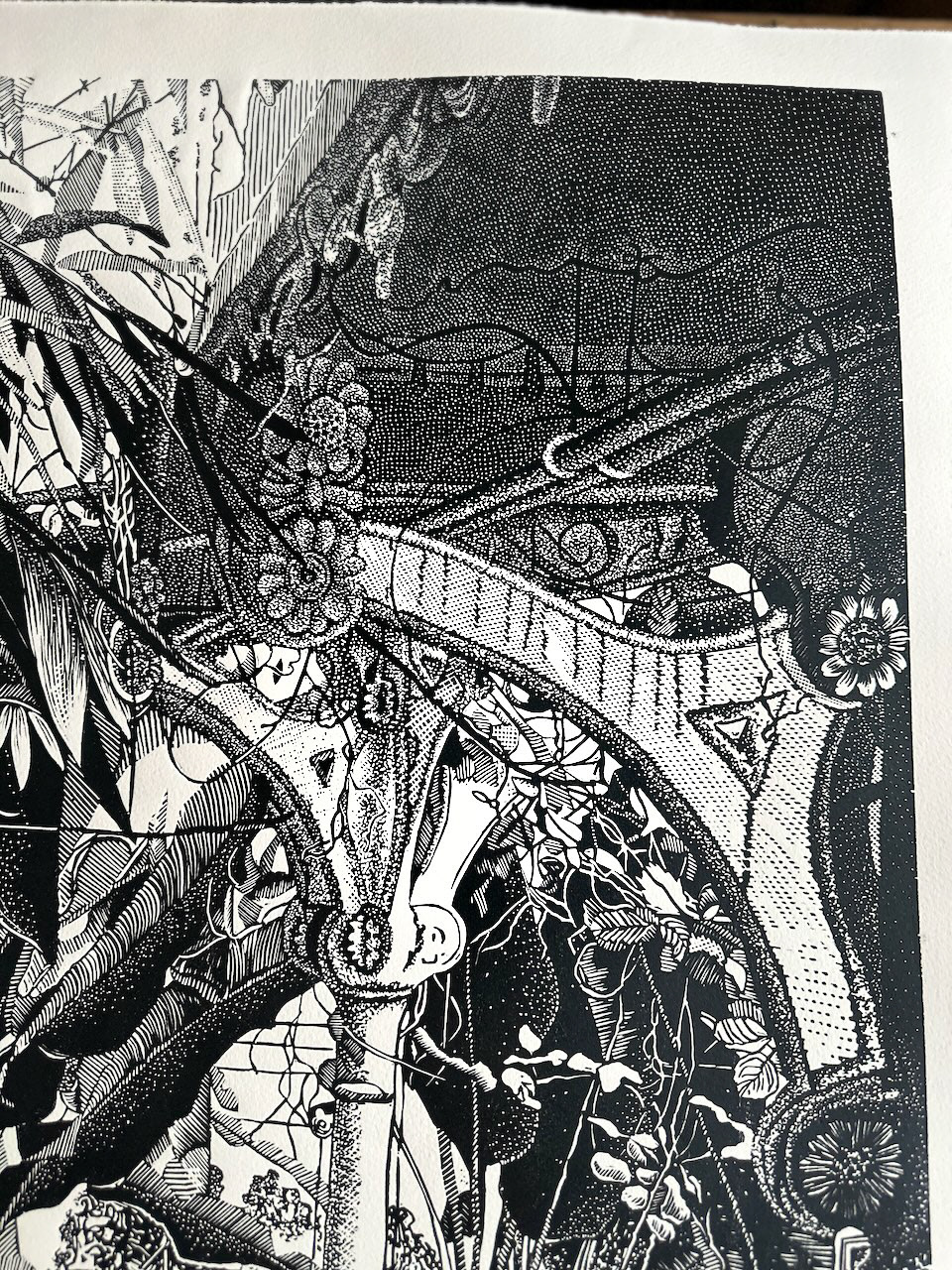
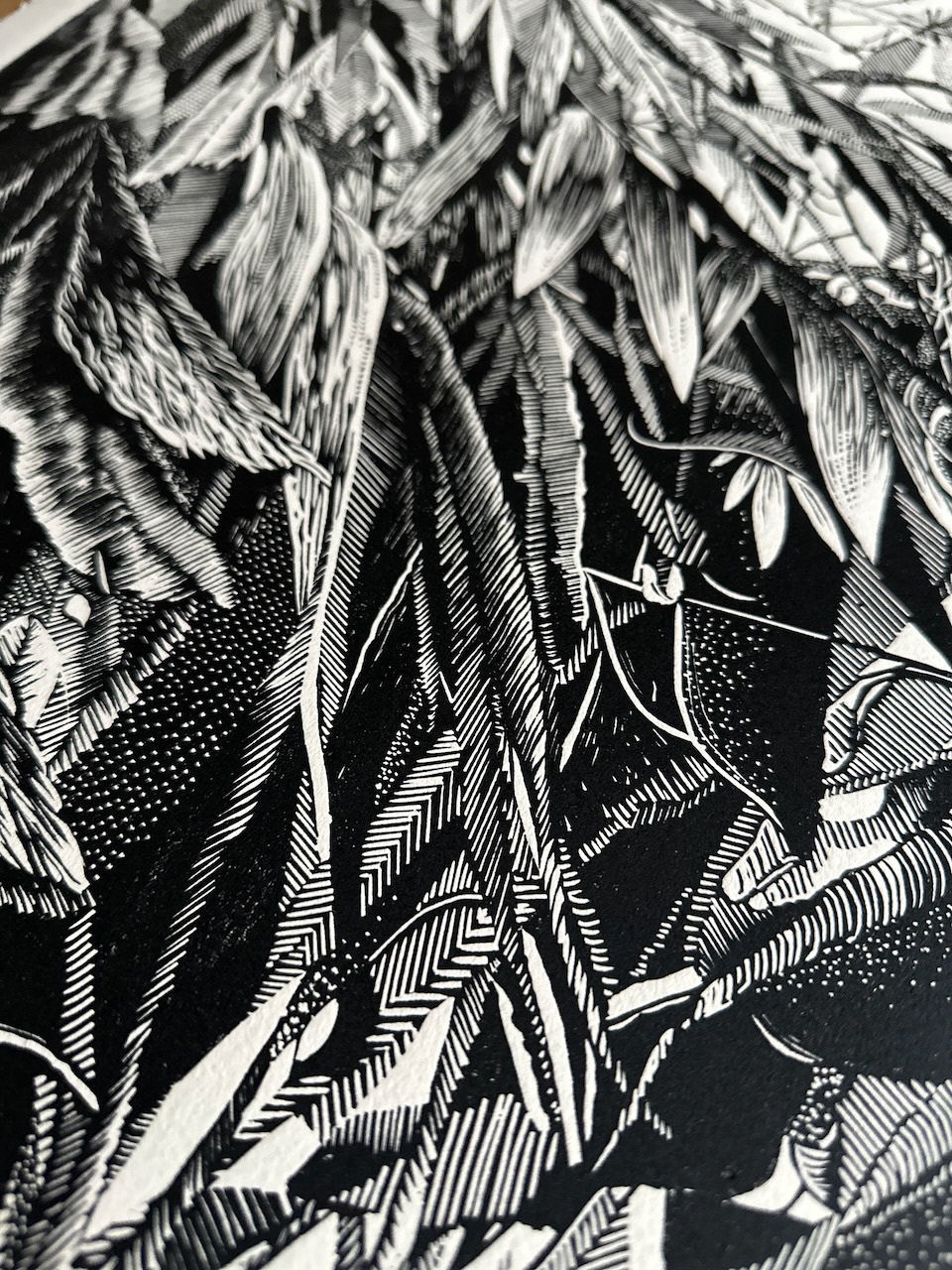
Process of creating
